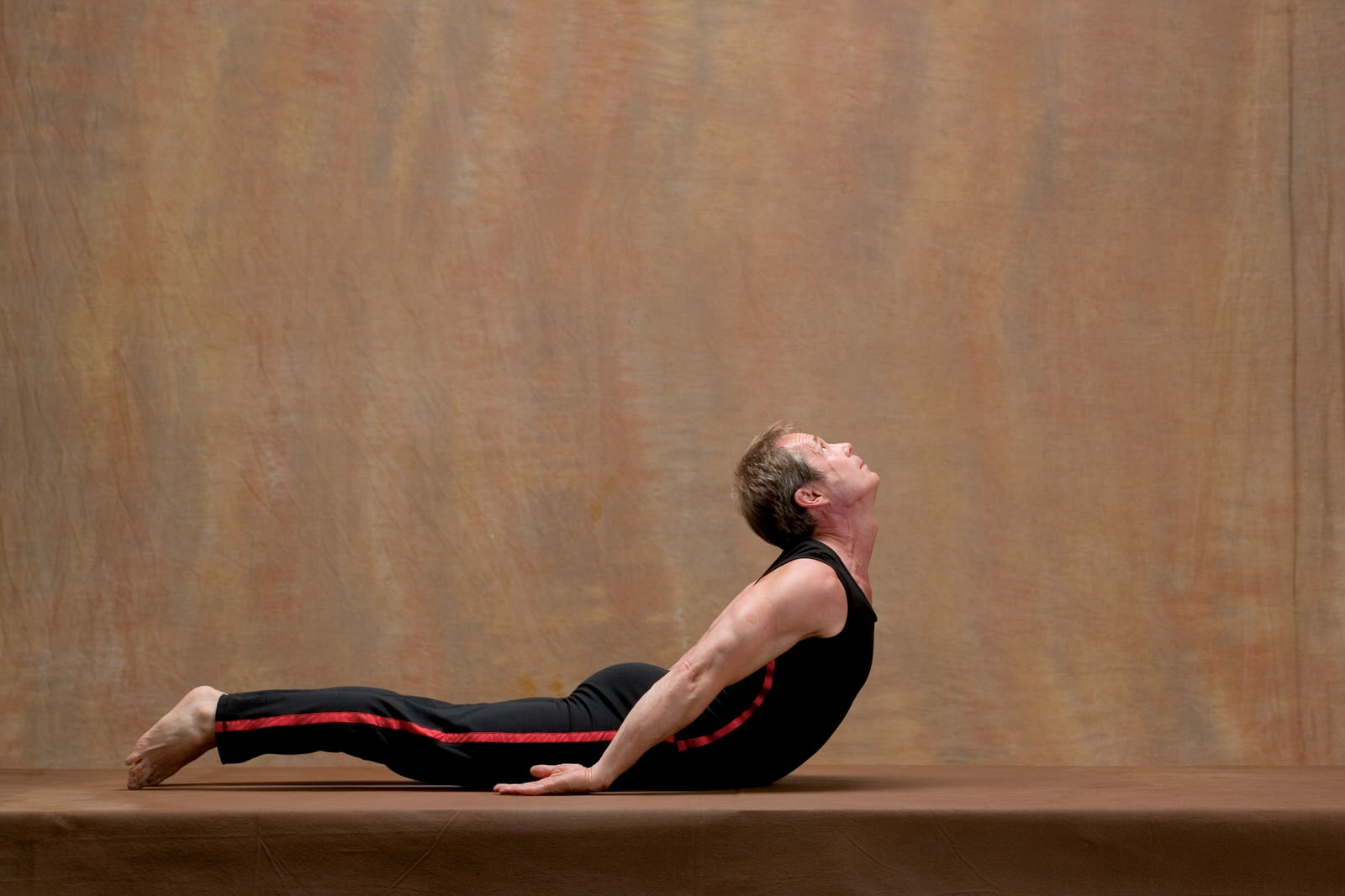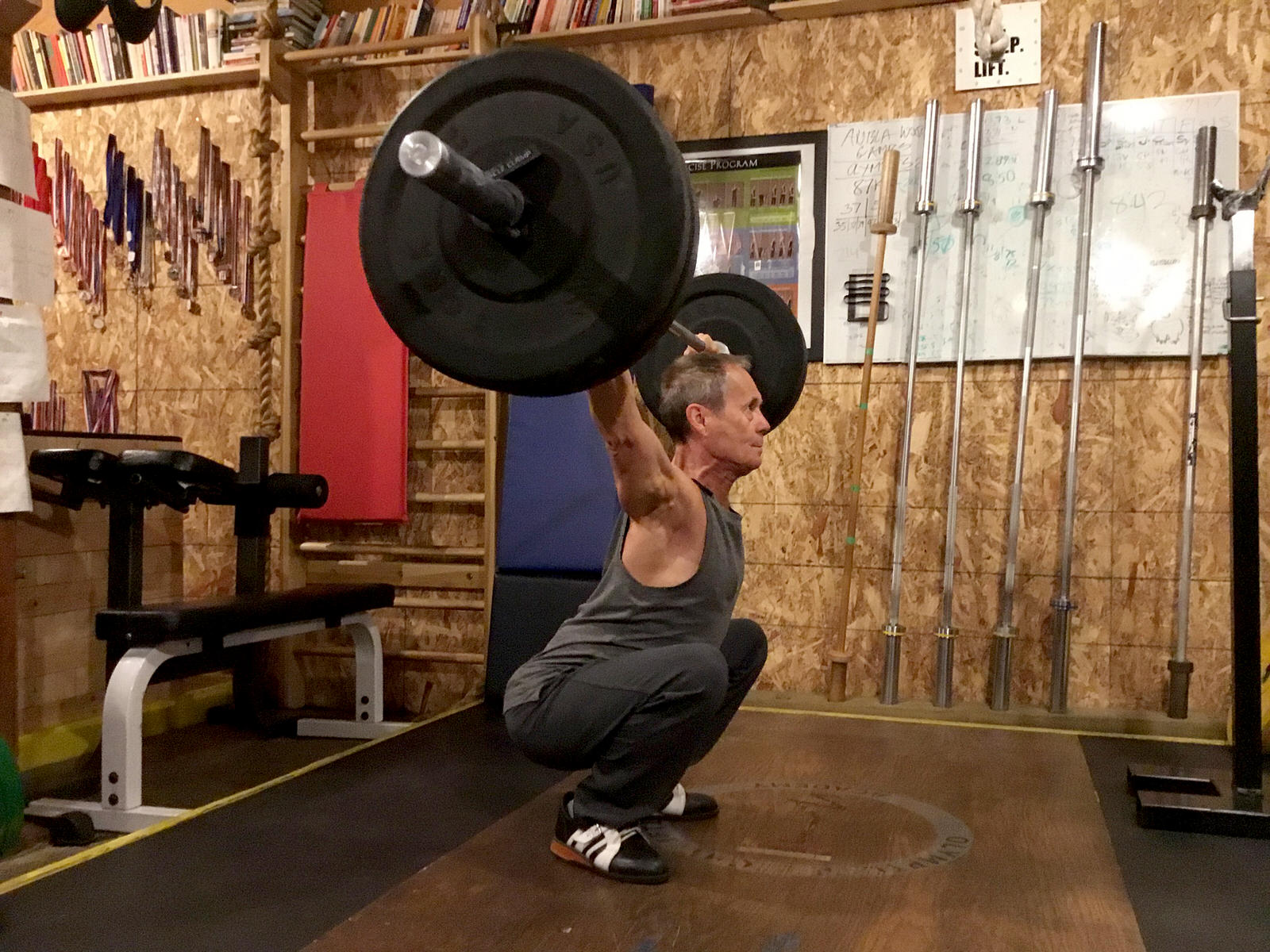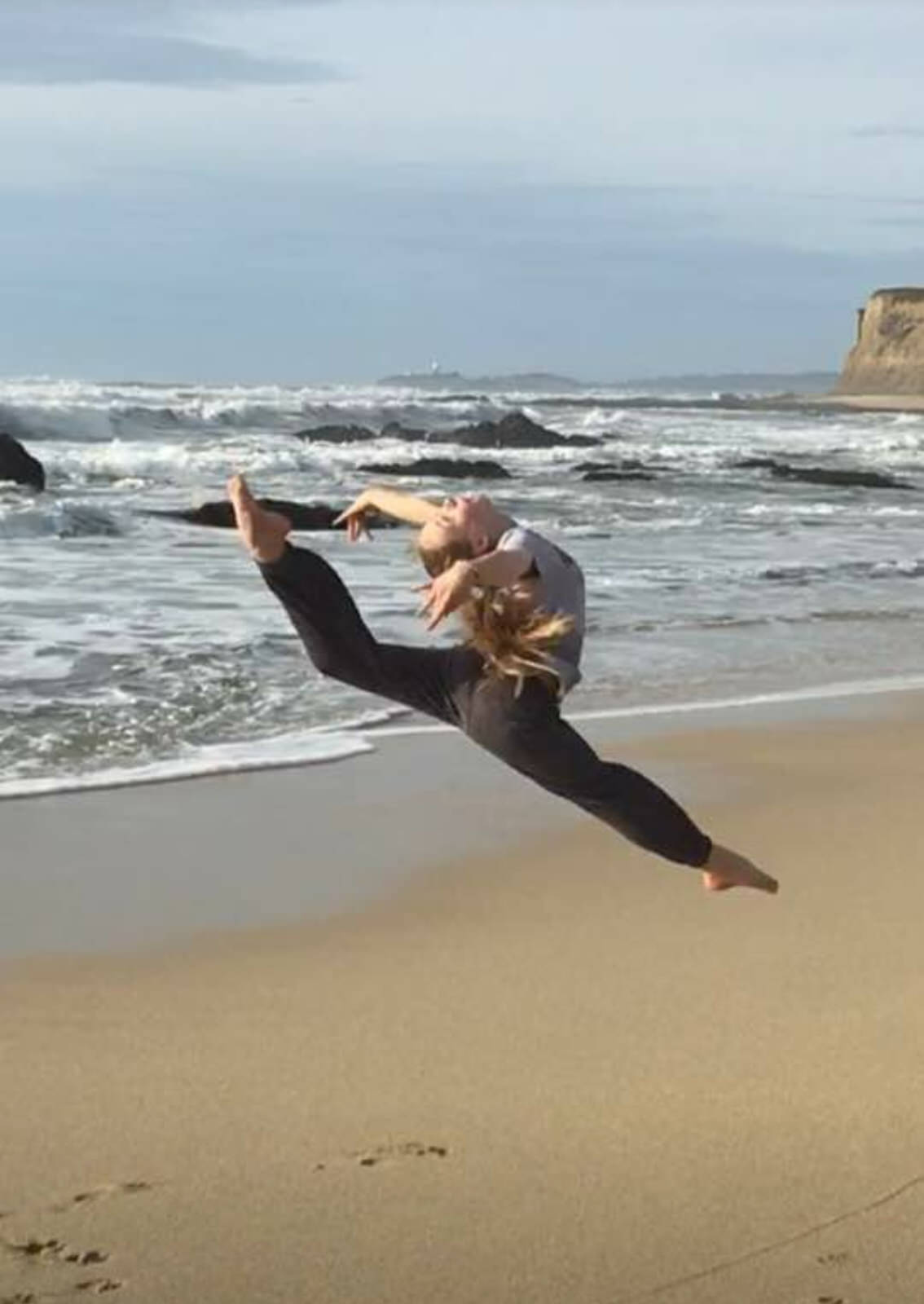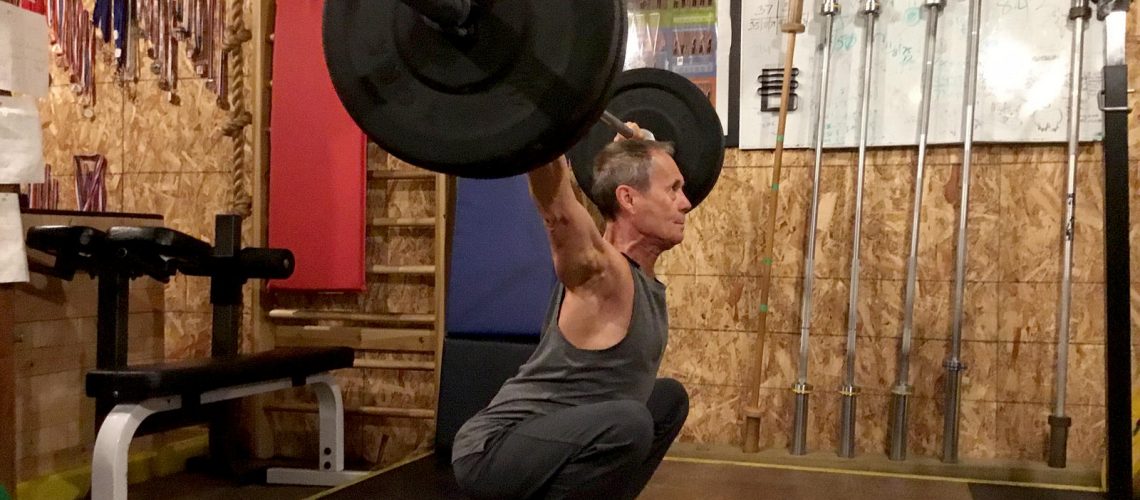Mobility, the ability to move freely and easily, is the heart of The Happy Body exercises, and you can’t be mobile without flexibility. Flexibility, on the other hand, is the capacity of the muscles and tendons to elongate or shorten for the purpose of movement. Yet there can be no movement without strength. And we have to practice movement; the way we practice movement in our everyday life will shape our body. For instance, the body type “The Sitter” reflects a lifestyle with little movement and activity. We lose flexibility due to how we live, not how we age. People in their advanced years can be highly flexible and strong, and we see that every time we attend Masters’ competitions.

Ultimately we all want a functional body with no pain—so how do we get there? In The Happy Body Program, we recognize three phases of flexibility: First, you must develop range of motion. Second, you need to develop strength in the movement. Third, you must develop speed in the movement.
A yogi, for example, develops only the first phase of flexibility, aiming for more elasticity than for strength or speed. The problem with extreme flexibility, however, is how it stresses joints and ligaments, creating inflammation and possibly injuries and arthritis. Without enough muscle, the body is too loose and over-extended. A powerlifter develops the first and second phases, but not the third, by lifting heavy weights slowly. By creating more bulk, however, powerlifters lose flexibility and hence mobility. The Olympic weightlifter develops all three phases, lifting heavy weights with speed.

Thus, it is possible, like the yogi, to be flexible without having strength or speed. And it is possible, like the powerlifter, to be flexible and strong without developing speed. But it is best of all to have developed all three and to be flexible, strong, and fast. For this reason, the ideal way to achieve flexibility is through movements that involve explosive speed—namely, pulling, squatting, jumping, and throwing. All of these are combined in Olympic weightlifting training.
The Happy Body was created based on these principles of Olympic weightlifting training, minus the speed factor. For safety, speed is the last element you add to The Happy Body Program, after you build a foundation of flexibility and strength, and achieve full range of motion. By moving slowly and mindfully, you develop the new habit of muscle contraction and relaxation in a controlled way. Even how you breathe brings more control into your practice of the exercises.
This mindfulness is crucial for mastery. You must intentionally slow yourself to override old habits with a new practice of control. When you slow down you also notice where you’re weak and inflexible, places where you’re compensating and have limitations. Plasticity of the mind allows you to try something, then discern whether it’s right for you. If something doesn’t work well it’s time to change. I look at people and I see how the mind can give people flexibility as they move through life—the two are deeply connected. This is true mobility, the ability to move freely.

DEEPER CONTEMPLATION
Where are you “stuck” in life? Is there a practice or habit that you continue without getting the results you want? And where are you mindful? How do you sustain and support mindfulness in your day-to-day activities?
In looking at strength and flexibility, where are you most developed? Where do you need more focus to sustain your optimal mobility?
Leave your response below in the comments.



Aniela and Jerzy,
I always enjoy your wisdom. Hope all is well with all three of you. Stu McGill
So nice to hear from you Stu and thank you for your kind words. We are all fantastic. Please visit us when you are in our area, it’s always a pleasure to see you.
As always, very interesting reading. Thank you. Unfortunately, I do not have time for a 2-days retreat. But, I’d like to meet you. You’ve been to my house in Millbrea a few months ago, but we did not get a chance to meet F2F. Would you mind calling me directly at 415-652-1410, so I will make an appointment with you? Dziekuje bardzo i do zobaczenia wkrotce – mam nadzieje.
Interested about your retreat. Send me more detail information please
Hi Manaz,
Since Covid19 and the lockdown, we offer zoom meetings if you are interested in learning more about THB program.
Kindly,
Aniela
I’m finding it difficult to develop both flexibility and strength. At 70, I’m learning Olympic lifting (as part of CrossFit training). However, as my muscles grow, my mobility isn’t developing at the same rate. It seems that the more muscular I become, the less flexible I am.
Mary, if you see that your mobility is compromised you need to focus more on flexibility and form of the exercises you perform, full range of motion, not strength. Otherwise you might end up with injuries.
Hello Aniela,
THB program seems to good to be true but based on the testimonials and the logic of how the process works, I’m a convert. It would be great to attend a workshop retreat. I know you mentioned a few seats were available when you sent the email on August 9th. I imagine it’s full but will there be another workshop in the near future. Thanks.
Thank you – this answers my question about increasing my weights before I have achieved full range of movement for the Happy Body sequences. I will continue to focus on flexibility first. I’m really thrilled with the program!